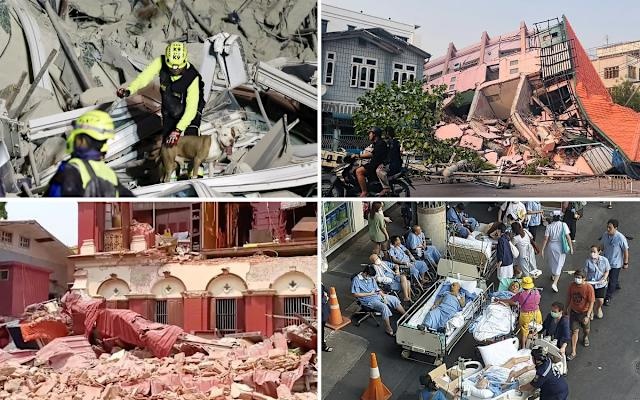At least 144 people have died and 732 have been injured so far in the country, Myanmar military leader Min Aung Hlaing said.
The epicentre was 16km (10 miles) north-west of the city of Sagaing, sending strong tremors that were felt as far as south-west China and Thailand.
Meanwhile, around 100 construction workers are missing after an unfinished high-rise building collapsed hundreds of miles away in Bangkok, according to Thailand’s deputy prime minister.
At least seven people have died at the site in Thailand, according to the Bangkok Metropolitan Administration.
A rescuer in Mandalay, Myanmar’s second-largest city, told the BBC the damage is “enormous”.
The total number of people killed and injured by the earthquake are expected to rise in the coming days.
There have been reports of roads buckling in the capital of Nay Pyi Taw, and the country’s military government has declared a state of emergency in six regions.
The earthquake struck near Mandalay, which has a population of about 1.5 million people.
A second quake struck 12 minutes after the first, according to the USGS, with a magnitude of 6.4 and its epicentre was 18km (11.1 miles) south of Sagaing.
Myanmar, formerly known as Burma, gained independence from Britain in 1948, but its recent history has been marked by unrest and conflict.
The military seized power in 2021, ten years after agreeing to hand over control to a civilian government. Since then, the junta has cracked down hard on dissent, executing democracy activists and jailing journalists.
The state controls almost all local radio, television, print and online media, and Internet use is restricted in the country, which often makes access to information difficult.
According to a recent BBC data project, the country is now controlled by a patchwork of groups, making relief and recovery efforts more challenging.
It is even harder to find accurate information about what is going on in rebel-held areas of the country.
The junta made a rare call for international assistance in the wake of the earthquake.


